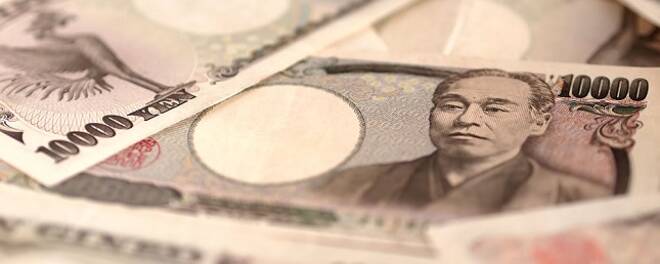Advertisement
Advertisement
USD/JPY Fundamental Daily Forecast – Weak U.S. Economic Data Will Support Higher Japanese Yen
By:
Weak NFP and Manufacturing PMI data is likely to rattle traders because it will lead to increased bets on a December rate hike even though the Fed hit the pause button on such a move. This would put pressure on U.S. Treasury yields. Weaker yields will make the U.S. Dollar a less-attractive investment.
The Dollar/Yen is trading lower on Friday shortly before the release of the U.S. Non-Farm Payrolls report at 13:30 GMT. There could be a volatile reaction to this report but then conditions will calm down ahead of the ISM Manufacturing PMI report at 14:00 GMT. We’re likely to see even more volatility following the release of this report.
At 12:07 GMT, the USD/JPY is trading 107.965, down 0.059 or -0.07%.
The Forex pair plunged on Thursday as investors reacted to the Fed activity on Wednesday and weaker-than-expected U.S spending data and Core PCE Inflation. Falling Treasury yields and lower demand for risky assets also pressured the Forex pair.
Don’t Bet on Rate Hike
Fed Chief Jerome Powell said Wednesday that the central bank would need to see a sustained and significant uptick in price pressures before considering future rate hikes.
“We just touched 2% core inflation to pick one measure. Just touched it for a few months and we’ve fallen back,” Powell said from Washington. “So I think we would need to see a really significant move up in inflation that’s persistent before we would consider raising rates to address inflation concerns.”
Powell stressed that any future move to increase borrowing costs would have to be preceded by a meaningful and consistent uptick in inflation, the rate at which prices rise in the U.S. economy. That could mean a long wait until the next hike, with the Fed’s preferred inflation gauge showing little signs of breaking out anytime soon.
U.S. Economic Data Surprisingly Weak
Inflation was tame in September. Consumer prices as measured by the personal consumption expenditures (PCE) price index were unchanged for a second straight month in September as the cost of energy goods and services dropped 1.3%.
In the 12 months through September, the PCE price index increased 1.3% after rising 1.4% in the 12 months through August.
U.S. consumer spending rose marginally in September while wages were unchanged, which would cast doubts on consumers’ ability to continue driving the economy amid a deepening slump in business investment.
The Commerce Department said on Thursday consumer spending, which accounts for more than two-thirds of U.S. economic activity, gained 0.2% last month as households stepped up purchases of motor vehicles and spent more on healthcare.
Daily Forecast
Weak NFP and Manufacturing PMI data is likely to rattle traders because it will lead to increased bets on a December rate hike even though the Fed hit the pause button on such a move. This would put pressure on U.S. Treasury yields. Weaker yields will make the U.S. Dollar a less-attractive investment.
Furthermore, weak economic data, especially the manufacturing PMI, will also bring up thoughts of a recession, which could weigh on stock prices. Lower demand for risk will encourage investors to seek protection in the Japanese Yen, which would put pressure on the USD/JPY.
About the Author
James Hyerczykauthor
James is a Florida-based technical analyst, market researcher, educator and trader with 35+ years of experience. He is an expert in the area of patterns, price and time analysis as it applies to futures, Forex, and stocks.
Did you find this article useful?
Latest news and analysis
Advertisement
